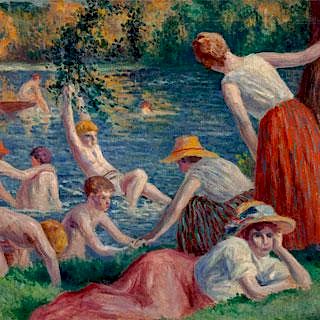Edouard-Denis Baldus (French, 1813-1889) After Bartlomé Esteban Murillo Virgi
Lot 66038
Categories
Estimate:
$3,000 - $5,000
Absentee vs Live bid
Two ways to bid:
- Leave a max absentee bid and the platform will bid on your behalf up to your maximum bid during the live auction.
- Bid live during the auction and your bids will be submitted real-time to the auctioneer.
Bid Increments
| Price | Bid Increment |
|---|---|
| $0 | $1 |
| $10 | $2 |
| $50 | $5 |
| $100 | $10 |
| $200 | $20 |
| $500 | $50 |
| $1,000 | $100 |
| $2,000 | $200 |
| $5,000 | $500 |
| $10,000 | $1,000 |
| $20,000 | $2,000 |
| $50,000 | $5,000 |
| $100,000 | $10,000 |
| $200,000 | $20,000 |
| $500,000 | $50,000 |
| $1,000,000 | $100,000 |
| $5,000,000 | $250,000 |
| $10,000,000 | $500,000 |
About Auction
By Heritage Auctions
Dec 9, 2015 - Dec 10, 2015
Set Reminder
2015-12-09 12:00:00
2015-12-10 12:00:00
America/New_York
Bidsquare
Bidsquare : European Art
https://www.bidsquare.com/auctions/heritage/european-art-1132
Heritage Auctions Bid@HA.com
Heritage Auctions Bid@HA.com
- Lot Description
Edouard-Denis Baldus (French, 1813-1889) After Bartlomé Esteban Murillo
Virgin and Child, 1841
Oil on canvas
18-1/4 x 15 inches (46.4 x 38.1 cm)
Signed and dated verso (prior to lining): E Baldus / 1841
PROVENANCE:
Private collection, Norfolk, Virginia;
Willis and Valma Foster, acquired circa 1972;
Robert and Willis Epps, acquired from the above, 2002;
By bequest to the current owner.
Before he found his métier around 1848 as an architectural and landscape photographer-one who achieved great distinction for his daring compositions, tendency toward abstraction, and experimental techniques resulting in images of great clarity, beauty and scale-Edouard-Denis Baldus began his artistic career in France as a painter. This sensitive copy after Murillo's Virgin and Child composition is an rare example of Baldus' skill as a painter. In private correspondence of September 8, 2014, Baldus historian Malcolm Daniel noted, prior to learning of the present work, "In all my research, I was able to find only a single surviving, identified painting by Baldus, another "Virgin and Child," this one a copy after Murillo, painted on commission for the state and placed in the Church of Saint-Mamert in Gard, in the south of France. Baldus submitted two paintings entitled "La Vièrge et l'Enfant Jésus" to the Salon of 1841, both of which were rejected. One was 95 x 70 cm.; the other was 105 x 80 cm." Neither aligns with the present work, which must be considered a new discovery.
This lot is accompanied by a black and white photograph of the back of the original canvas bearing signature and date prior to restoration and lining in 1975.
Dimension
Height: 1825.00Width: 1500.00Lined canvas; there appears to be craquelure throughout with light frame wear with faint abrasions along top edge; light surface grime with a couple tiny dots of possible accretions; scattered tiny pinpoints of white pigment scattered across figures' skin; under UV exam, the above mentioned pigment is revealed as inpainting and there appears to be several tiny pinpoints of inpainting in same technique across the entire work including background and figure's clothing, most likely to address blistering and flakes of loss mentioned in restoration report; according to the restoration report from 1975, this painting was cleaned, varnish removed, inpainted, and revarnished as well as the canvas linen and wax-lined and restretched on new stretcher. UnframedCondition
- Buyer's Premium



 EUR
EUR CAD
CAD AUD
AUD GBP
GBP MXN
MXN HKD
HKD CNY
CNY MYR
MYR SEK
SEK SGD
SGD CHF
CHF THB
THB














